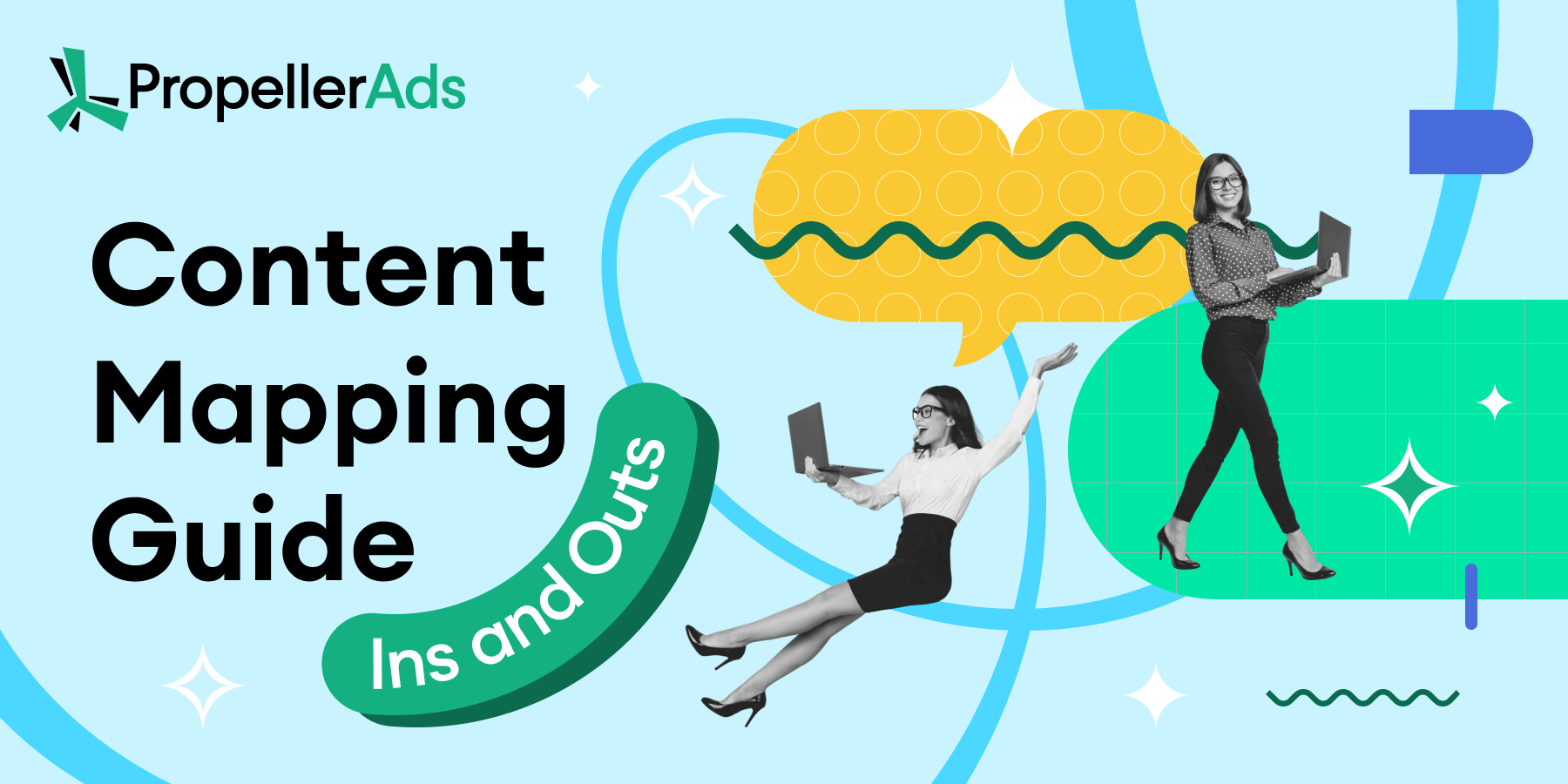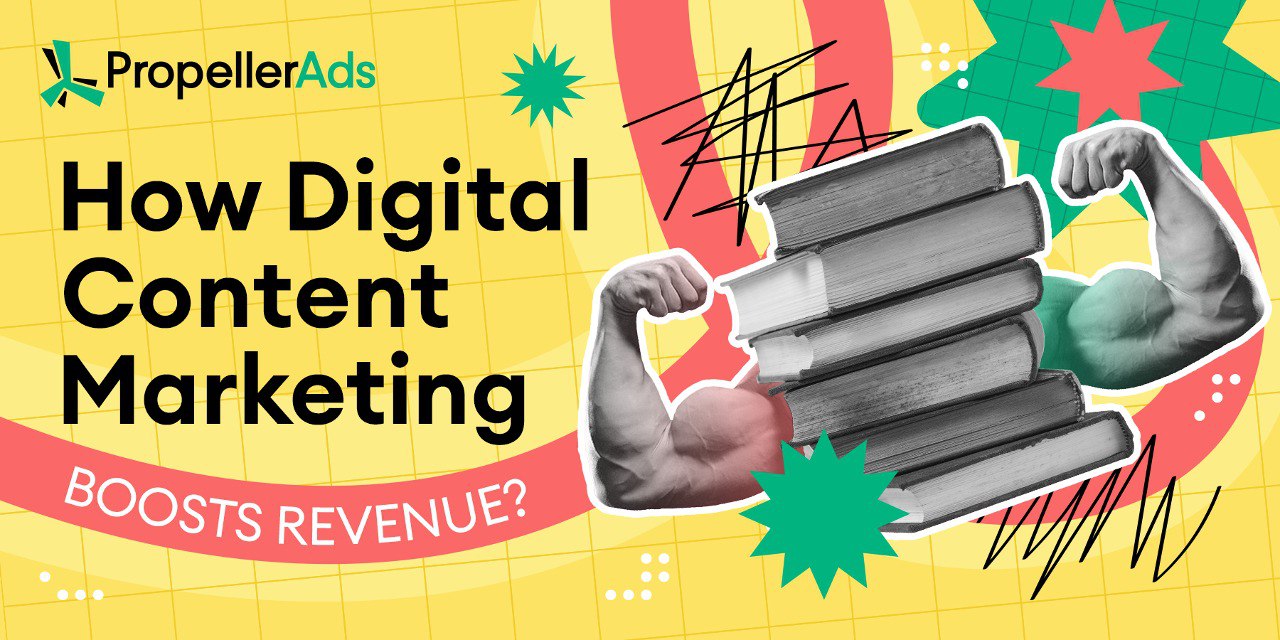Guide to Content Mapping

Ever feel like your content is missing the mark even though you spent all your time and effort writing and optimizing it to a tee? The problem might not be what you’re creating, but when and why. Way too many businesses publish content without a clear plan, and that can create problems later on.
But you can avoid all of that guesswork and potential problems with content mapping. In this guide, we’ll give you everything you need to know about content mapping and how you can make a map of your own.
What is Content Mapping and Why is it Important?
Publishing content without a plan is a common misstep and an expensive one to boot. All of your great ideas and amazing content won’t have much of an effect if you don’t have structure.
Luckily for marketers everywhere, this problem can easily be fixed with content mapping. But what is a content map anyway?
A content map is a framework that links your content to specific audience needs across different stages of their journey. It’s basically a plan that helps you deliver the right message to the right people at the right time.
A website content map serves the same purpose, except the focus is solely on your site.
A well-structured content map offers a few key benefits:
- It makes your content funnel more intentional. Instead of guessing, you’re guiding people through awareness, research, and action in a way that actually fits their mindset.
- It helps identify what’s missing. You’ll start to see where content is thin or where you’re repeating yourself, and you can fill those gaps with purpose.
- It improves how people experience your site. When content matches what someone’s looking for, they tend to stick around and engage more.
- It brings teams together. When everyone’s working from the same structure, collaboration gets easier, and the work stays aligned.
More than anything, content mapping keeps your strategy grounded. It gives each piece of content a job to do and a reason to exist.
Key Components of a Content Map
At its core, a content map is a strategic blueprint in which every piece serves a purpose, which is to connect the user to their needs.
Here’s how to break it down, and more importantly, how to use it.
1. Audience Personas (But Smarter)
Building audience personas should be one of your main priorities because you need to know who you’re selling to. That’s why 73% of businesses either utilize customer personas or plan to do so in the future.
Don’t stop at names and job titles. Build personas around behavior and mindset:
- What triggers them to start searching?
- What do they already believe about your product or industry?
- What’s holding them back from taking action?
2. Buyer’s Journey Stages (Applied to Real Users)
We all know the classic journey stages our customers have to go through before making a sale. We have awareness, consideration, and decision, but that’s just a starting point.
For each stage, you should document:
- What the user actually needs/wants
- What they’re Googling
- What kind of proof do they need to feel confident
3. Content Types (Chosen Strategically)
According to research, as much as 87% of marketers report that content marketing generates demand/leads, but not all content does that, because not all content is made equal. You need to be picky about what you’re using to represent your brand and business.
Instead of picking formats based on what’s trendy, match your content to:
- The level of commitment required (videos or infographics early on, webinars or comparison pages later)
- How much explanation does the topic need
- Where your audience naturally consumes content
4. User Intent (The Often-Missed Piece)
Intent is at the core of every content decision. Instead of asking yourself what people are searching for, you need to ask why.
When you align your content to intent, you learn how to create experiences that feel helpful instead of pushy.
5. CTAs and Outcomes (One Step, Not the Whole Leap)
The goal of content isn’t always to close the sale. Sometimes, you just want to guide the user to whatever comes next.
Try to think of it like this: every piece of content should answer the question “What should the reader do after this?” And that answer should match their intent and stage in the journey.
If someone’s in the awareness stage, asking them to “Request a demo” might feel like too much, too soon. But offering them a “Download the full guide” CTA? That feels like a natural next step.
How to Build a Content Mapping Strategy (Step-by-Step)
When you’re building a content map, you’re creating a system that guides your team and serves your audience.
And while there are many content mapping tools out there you can use to help you make a solid map, as well as content map examples you can look at for inspiration, you still need to know the basics.
Here’s how to do it with purpose.
Step 1: Create Personas That Inform Real Decisions
Use interviews, support chats, and analytics to define personas based on:
- What problems are they actively trying to solve
- What sources do they trust (forums, YouTube, review sites)
- What terms and language do they actually use
What to avoid: Generic personas like “Marketing Mary, age 34, likes yoga.” That doesn’t help your content team write headlines or plan offers.
Step 2: Build a Journey for Each Segment
Instead of assuming all users follow the same path, map out multiple mini-journeys. Think:
- New users vs. returning users
- Technical buyers vs. budget holders
- DIY researchers vs. ready-to-buyers
Quick tool: Use sticky notes or a simple spreadsheet to write out each step for each persona and what they need to feel confident moving forward.
Step 3: Audit and Tag Your Existing Content (For Real)
Don’t just list what content exists, label it:
- Which persona does it serve
- What stage does it target
- What format is it
- What CTA does it use
- How well it’s performing (traffic, bounce rate, conversions)
What you’ll find: Some content is doing nothing. Some is duplicated. Some is one tweak away from being useful. This step prevents the “just make more” syndrome.
Step 4: Build Your Map (And Make It Accessible)
Turn your notes into a working content map. Tools like Airtable, Notion, or even Google Sheets work fine. Make sure it includes:
- Stage
- Persona
- Topic
- Content format
- CTA
- Status (existing, needs update, new)
Bonus tip: Add an “owner” and “last updated” field. That keeps the map useful over time, not just when it’s first built.
Step 5: Use It in Daily Content Planning
A content map only works if it’s used. Bring it into:
- Editorial planning
- SEO strategy
- Briefs for writers and designers
- Campaign planning
What to aim for: Your content needs to be strategic from the second it’s proposed, because if you think about that after it’s published, it’s too late.
Common Content Mapping Mistakes to Avoid
Even if you have a solid plan, one wrong move can make your content mapping go sideways before you know it.
Here are a few pitfalls to watch out for:
1. Ignoring the Buyer’s Journey
It’s easy to create content based on what you want to say instead of what your audience needs to hear. If you’re not mapping content to where someone is in their decision process, your message won’t land.
2. No Clear CTA
If your content doesn’t guide the user toward the next step (subscribe, read more, contact you) it’s a dead end. Every asset should move the reader forward, even if it’s just to learn more.
3. Overloading One Stage
Some teams create tons of awareness content but make the mistake of forgetting about consideration and decision. And when that happens, when the customer is ready to act but doesn’t have the right info, they won’t know what to do next, and you’ll lose a sale.
4. Make a Plan and be Done With it
Your content map isn’t one-and-done. As your audience, products, or priorities change, your map needs to evolve, or otherwise it will stop serving its purpose very soon. That’s why you should revisit it quarterly to keep it relevant.
Final Thoughts
Content mapping isn’t about overplanning; it’s about making sure the effort you put into content actually moves the needle. When you understand what your audience needs at different points in their journey, you can meet them there with the right message, at the right time.
So, it doesn’t matter if you’re refining an existing strategy or starting from scratch, a thoughtful content map gives you something too many brands lack: direction.
Join our Telegram for more insights and share your ideas with fellow-affiliates!




